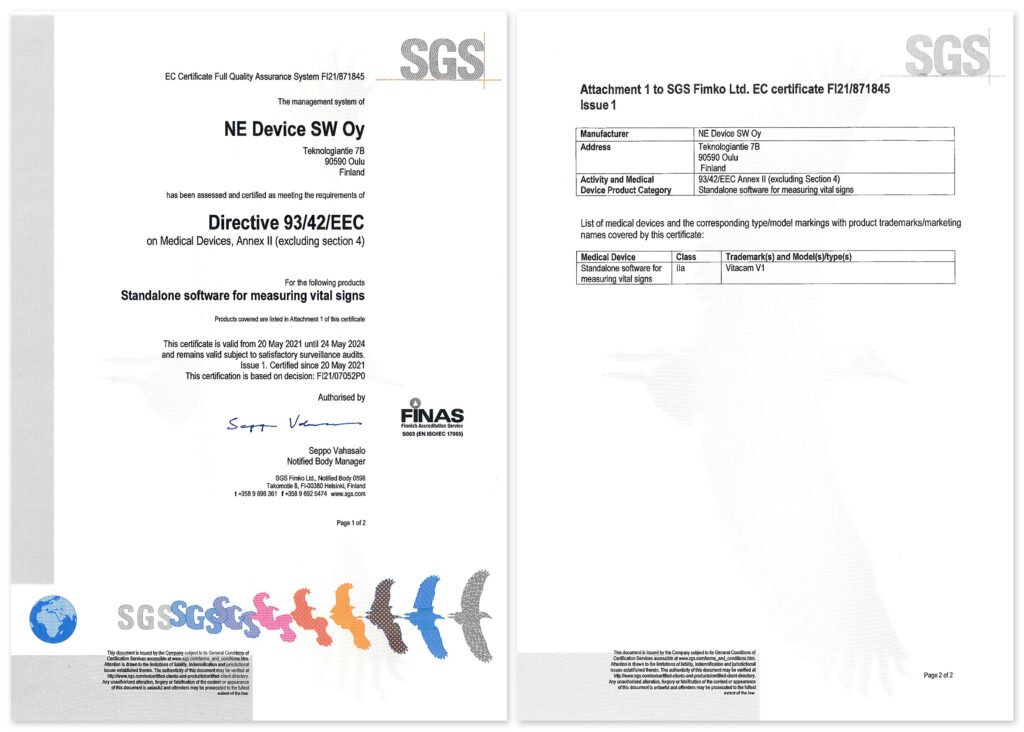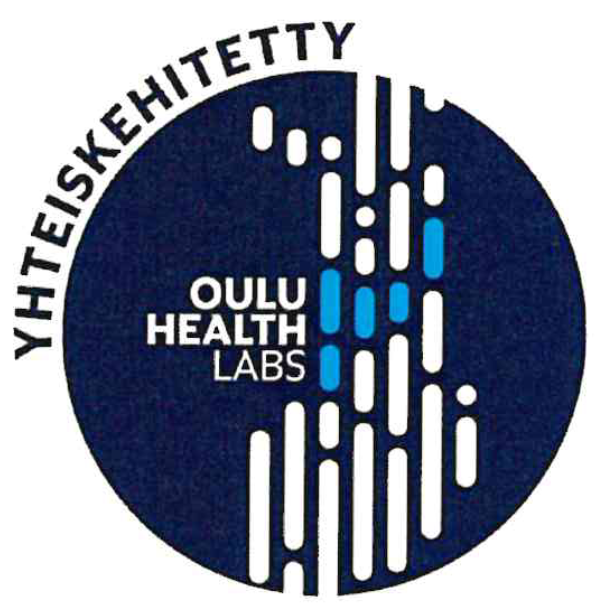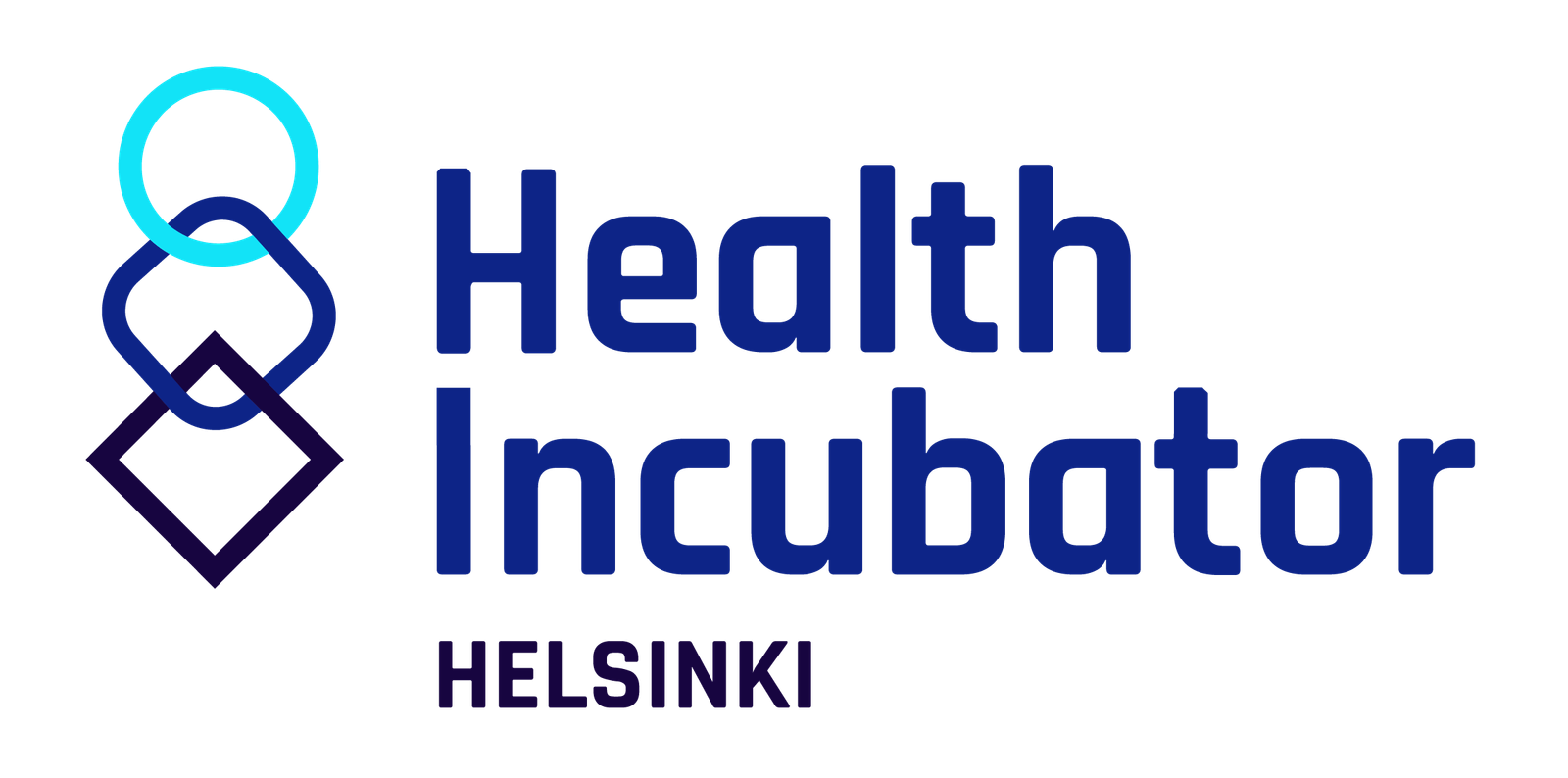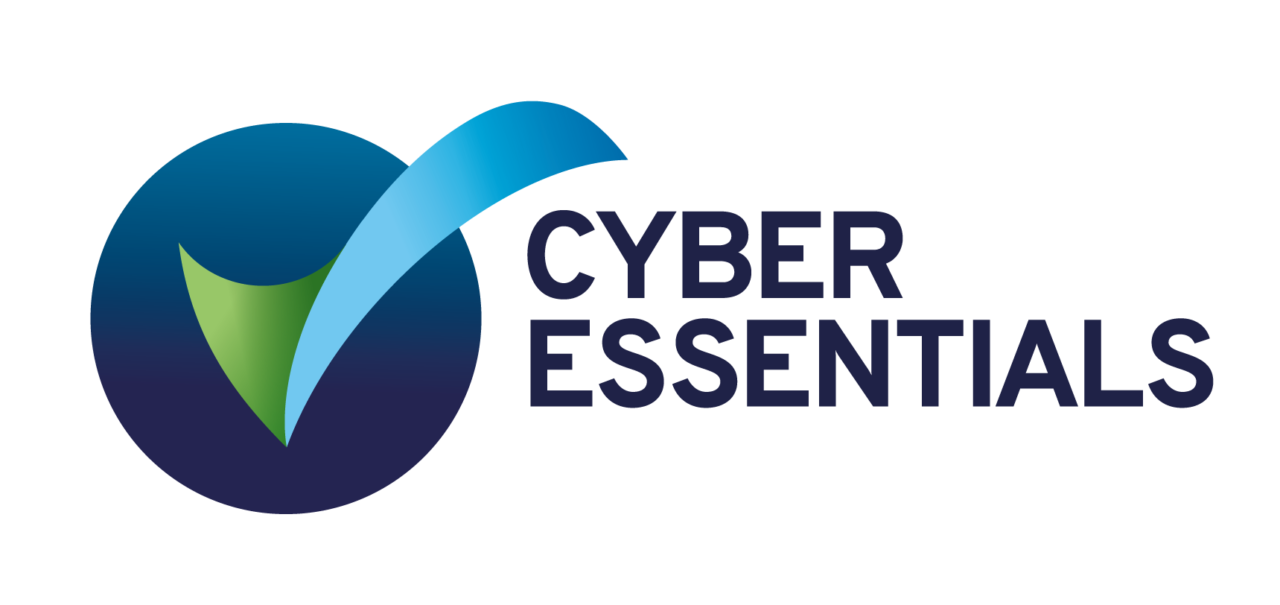Vitacam is approved as a CE certified class IIa medical device, ready for launch across Europe.
The certificate of compliance was issued by SGS Finland according to the Directive 93/42/EEC on Medical Devices. This is a major step enabling the launch of our standalone software for monitoring vitals signs to the European market.
Respiratory rate is an under-reported vital sign despite its value as an early predictor of deterioration, particularly with the elderly. Outside of critical care, the most typical way to measure respiratory rate is by counting chest movements with a stopwatch, but this can be affected both by interruptions and a form of ‘white-coat syndrome’ – where awareness of being measured leads to the patient sub-consciously modulating their breathing.
Vitacam uses computer vision to process video of a patient to obtain both respiratory rate and heart rate. Respiratory rate is obtained by observing chest movement like a human would, but unlike a human, our algorithm ignores interruptions and stays in the background.
Heart rate is obtained through remote plethysmography. This means sensing changes in skin colour as pulsatile blood flows, which can be detected in Red-Green-Blue (RGB) channels through a similar technique used by pulse oximeters. With Vitacam this detection can however be done from a distance with no probe attached to the fingertip.
While these techniques have been around for a while, until now a plethora of real-world factors have affected their transition from research labs to clinical use.
A special thanks to Oulu University Hospital.
We’re excited to take Vitacam forward in Europe.








